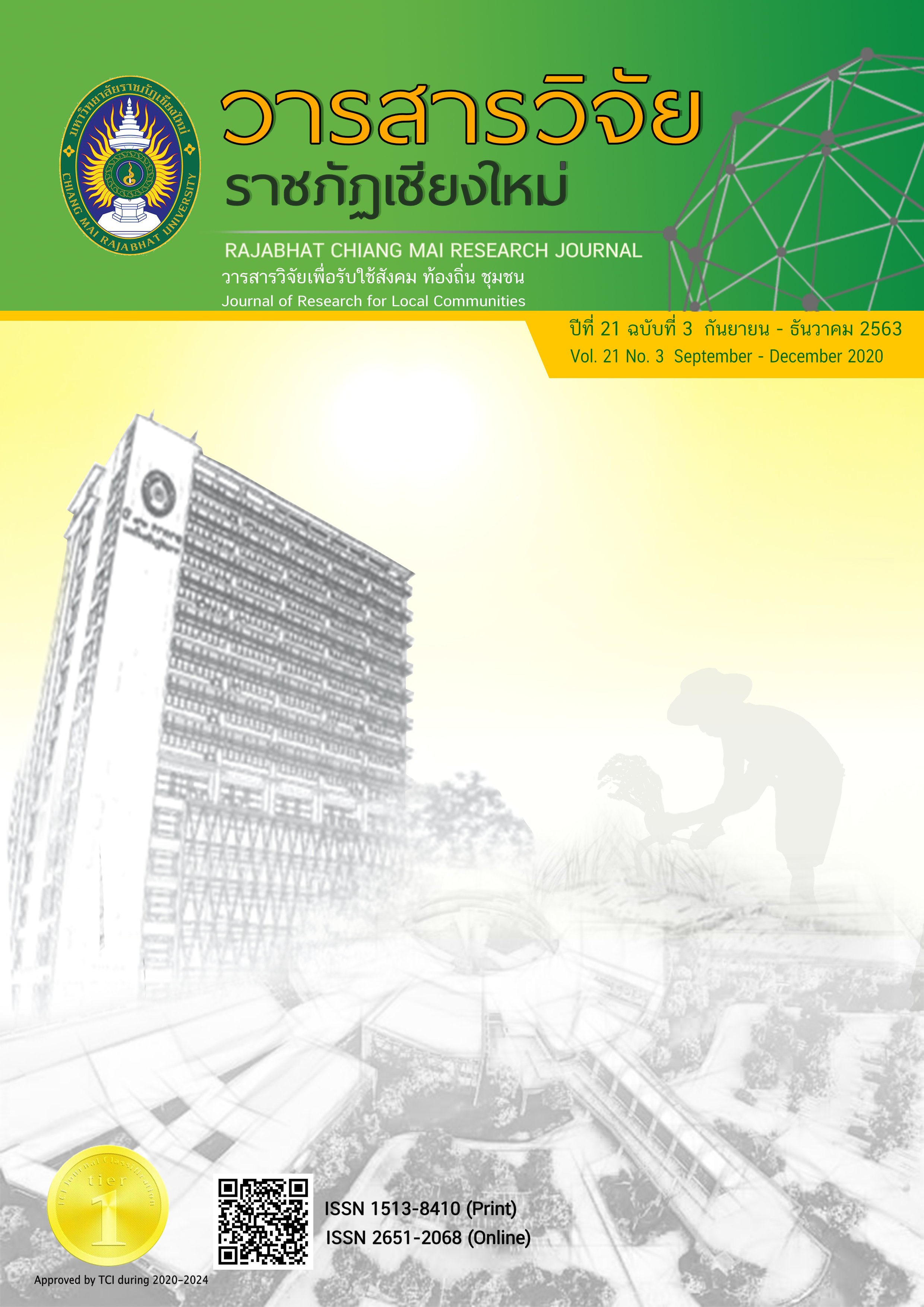Guildlines for Development Pattaya to Sustainable Shopping Tourism City of Mainland Chinese Tourist
DOI:
https://doi.org/10.14456/rcmrj.2020.240370Keywords:
Pattaya, Sustainable shopping tourism, Mainland Chinese touristAbstract
This study aimed to study on shopping behaviors and satisfaction of mainland Chinese tourist in Pattaya and to finding guildlines for development Pattaya to sustainable shopping tourism city of mainland Chinese tourist. Data was conducted from 400 samples by using descriptive statistics such as percentage, mean, standard deviation and hypothesis testing by chi-square statistic. The results showed that the most of tourist samples were female, 20-29 years old, secondary-bachelor education, private sector employee, income 4,001-8,000 CNY. The resulted of tourism behavior found that the most of samples are 1st visit in Thailand, travel once time a year, travel 4-6 days per time, purpose of travel was leisure in holiday and travel with friends, managing trip by tour agent, travel by plane and hotel stays, while visited to Pattaya 1-3 times within 3years, last visited and now stays are 1-3 days same, finding data from website/online/social media, travel expense 2,001-4,000 CNY and finding data while stay in Pattaya from online/social media, using application is Wechat. The popular product is dried food, popular shopping place is department store such as Terminal 21 Pattaya and Central Pattaya. For expectation and satisfaction of marketing mix factors affected to come shopping that overall are high level which showed that most expectation is place factor such as vast/ huge/ modernity/ comfort/ convenient and followed factors by physical evidence, price, people, promotion and process respectively. For most satisfaction is product factor such as product quality and value and followed factors by place, people, physical evidence, process, price, and promotion respectively. The hypothesis testing results found personal factors have the relationship with shopping behaviors and marketing mix. Besides marketing mix factors have the relationship with shopping behaviors at the .05 statistically significant level. This resulted will be important suggestion for planning and development tourism in Pattaya area.
Downloads
References
Dhamabutra, P. (2016). Documents for teaching and learning about the elements of Bangkok tourism: The Institute of Ecotourism, Srinakharinwirot University. (In Thai)
Goeldner, C. R., Ritchi, J. R. B., & Mcintosh, R. W., (2000). Tourism: Principle, Practices, and Philosophies. New York: John Wiley & Sons.
Kasikorn Research Center. (2019). Business trends. Retrieved from https://kasikornresearch.com/TH/analysis/k-econ/business/Pages/index.aspx?c=362 (In Thai)
Kotler, P. (1997). Marketing Management: analysis, planning, implementation and control. (9th ed.). New Jersey: A Simon & Schuster.
Ministry of Tourism, Tourism and Sports. (2019). Tourist statistics. Retrieved from https://www.mots.go.th/old/more_news.php?cid=411 (In Thai)
Parasakul, L. (2015). The motivations and the adttitudes effecting the satisfaction level of Chinese tourist’s visiting Thialand. Retrieved from https://www.dpu.ac.th/dpurc/assets/uploads/public/bosn62ukr74skks0gk.pdf (In Thai)
Prachachart online business. (2015). The booming Chinese tourists visiting Thailand. Retrieved from www.terrabkk.com/news/89488/ (In Thai)
Tat Intelligence Center (2018). Tourist Statistic. Tourism Authority of Thailand (TATIC). Ministry of Tourism and Sports. Retrieved from www.tourismthailand.org/TATIC
United nations world tourism organization. (2019). International tourist arrivals. Retrieved from http://media.unwto.org/press-release
Wiyaporn, W. (2020). The way to develop Pattaya to the city of shopping tourism for Chinese tourists. (Faculty of Liberal Arts, Rajamangala University of Technology Krungthep). (In Thai)
Yamane, T. (1970). Statistic: Introductory Analysis. (2nd ed.). New York: Harper and Row.
Downloads
Published
How to Cite
Issue
Section
License
1. Articles, information, content, images, etc published in the “Community and Social Development Journal” are copyrighted by the Community and Social Development Journal, Chiang Mai Rajabhat University. In order to properly distribute the articles through print and electronic media, the authors still hold the copyright for the published articles under the Creative Commons Attribution (CC BY) license, which allows the re-distribution of the articles in other sources. References must be made to the articles in the journal. The authors are responsible for requesting permission to reproduce copyrighted content from other sources.
2. The content of the articles appearing in the journal is the direct responsibility of the article authors. The editorial board of the journal does not necessarily agree with or share any responsibility.














